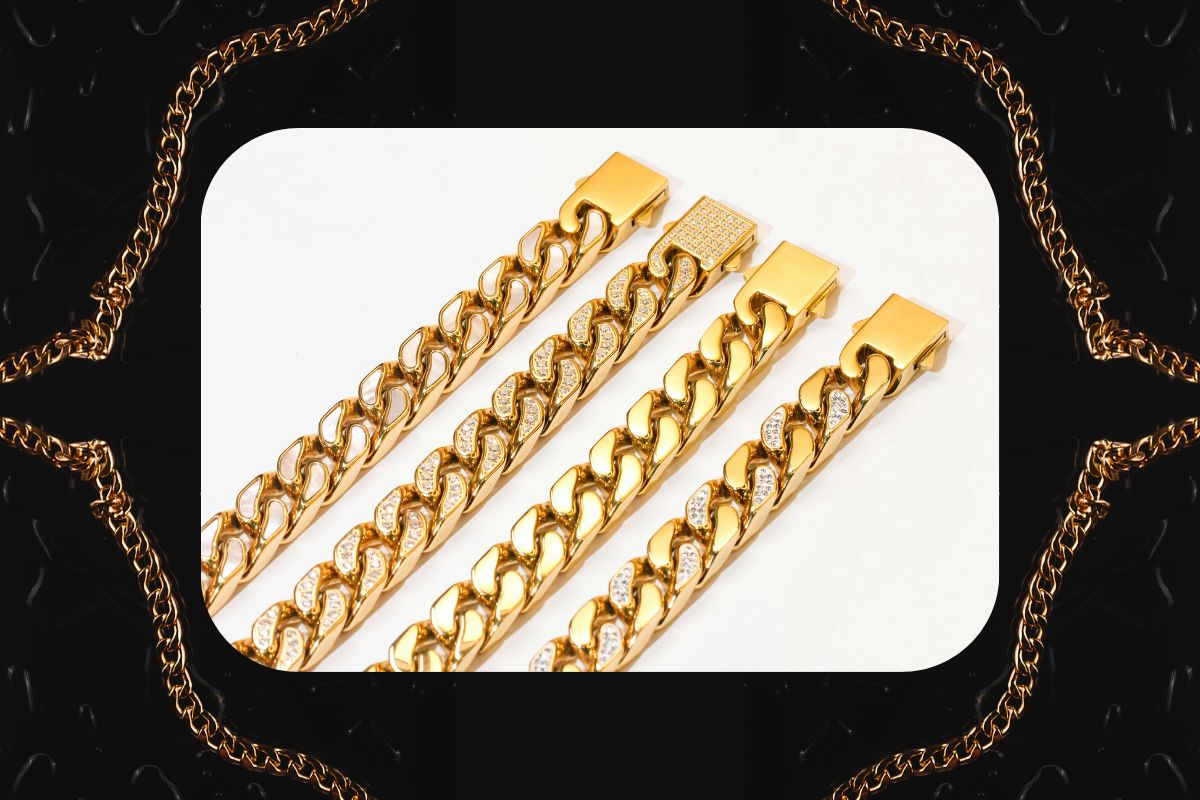
7 Reasons Why Manual Clipping Paths are Crucial for Jewelry Chains
Ansu Man | April 25, 2025 | Categories: Clipping Path | 0 comments
Jewelry chains are characterized by interlinked clasps, delicate materials, tiny gaps and overlapping parts. They are not like rings or bracelets, which are much simpler to isolate from backgrounds.
Creating a clipping path for jewelry chains, on the other hand, require time, patience, steady hand and expert knowledge of vector pathing tools. Great experience is required to avoid flattened textures, sloppy edges, or missing segments.
You might wonder why clipping paths are a must for jewelry chains – whether worn as a necklace or otherwise or whether they are with pendants or used standalone. The following are the reasons.
1. Precision
Chains are defined by their intricate details and sophisticated edges. AI or automatic background removal tools often blur or distort chain edges, merge links or leave gaps.
Manual clipping paths, usually done using the Pen tool, ensure every link is cleanly separated and preserved. Professionals working on these tools trace every contour with surgical accuracy, isolating the chain from its background without cutting into its design.
Precision signals quality for big brands, who want to be convinced that the final results are worth their investment.
2. Versatility
Jewelers and retailers need images that work across various marketing channels, such as catalogs, websites and social media.
Manual clipping paths ensure backgrounds are removed seamlessly, leaving a transparent or customizable backdrop. Images are, thus, adaptable for transparent backgrounds, layer masks, mockups and various other formats without quality loss.
Whether you want to place chains on a white e-commerce background or a luxurious lifestyle setting, human editors can make it sure to prevent distracting artifacts that automated tools often leave behind.
3. Natural Appeal
Automated selections often cause loss of texture on metal surfaces. Manual clipping helps retain the reflective nature and finish of gold, silver, or platinum chains.
The reflective qualities of metals are preserved by carefully outlining the chain without altering its sheen. Unlike automated tools that can dull reflective surfaces or create unnatural halos, manual edits help highlights the luster that makes the jewelry items stand out.
Keeping the natural appeal while highlighting the salient features give the product a premium look. Enhanced focus on reflective surfaces helps chains sell more.
4. Consistency
Even one imperfect edge can ruin the luxury appeal of a jewelry item. What you need is consistency when dealing with dozens or hundreds of chains.
Every image must adhere to the same standard – uniform edges, accurate proportions, and cohesive presentation. Smooth and pixel-perfect outlines are essential for high-end catalog or ad visuals.
Manual edits create a professional, branded look across your catalog or online store, which is not possible with automated tools characterized with uneven results.
5. Accuracy
The product in photo must match the product in the box. Accurate representation helps build customers’ trust. It also helps minimize product returns.
Jewelry chains, particularly thin or intricate ones, feature tiny gaps and shadows between links. If a chain’s image misrepresents its appearance due to sloppy editing—like distorted links or inaccurate colors—customers will return it.
Manual clipping paths ensure that the chains are accurately represented in images with correct depiction of depth and realism.
6. Customization
Some chains feature pendants, gemstones, or mixed materials, adding complexity to the editing process. Chains with pendants or layered chains require separate clipping paths for each component.
Manual pathing allows for layer-wise editing, especially useful for swapping pendants or background.
Human editors can navigate the intricacies, isolating the chain while preserving attached elements like charms or clasps. Automated tools often cut off key details and misrepresent the product.
7. Competitive Advantage
It is important to stand out in a market flooded with myriads of jewelry options. High-quality images with flawless clipping paths signal professionalism and care, setting you apart from competitors who rely on subpar, automated edits.
Without precise pathing, techniques like selective sharpening, dodge & burn, or metallic highlights become sloppy or uneven. A clear path is, thus, the foundation for pro-level enhancements.
Superior visuals don’t just attract buyers, but they also position you as a premium player in the market.